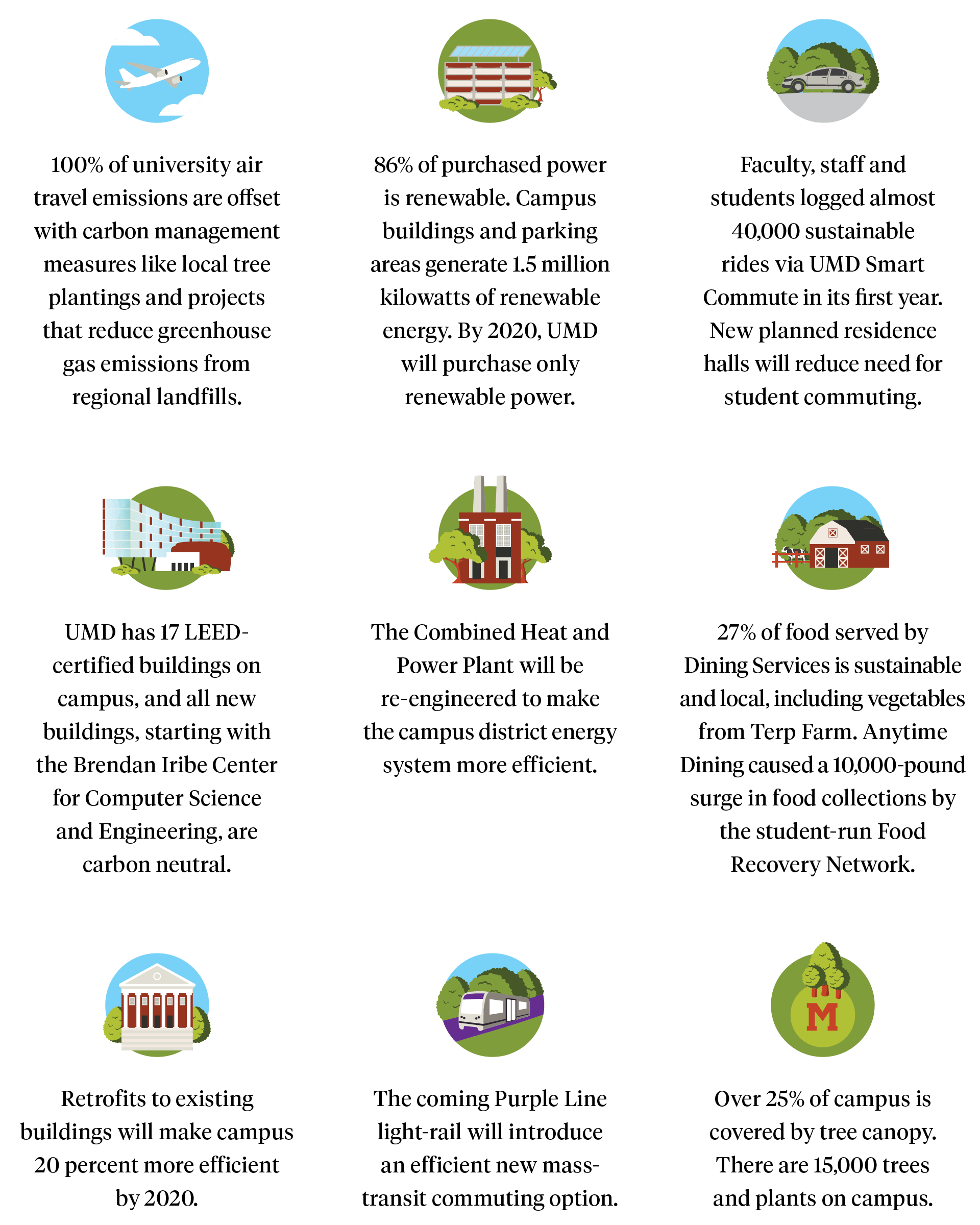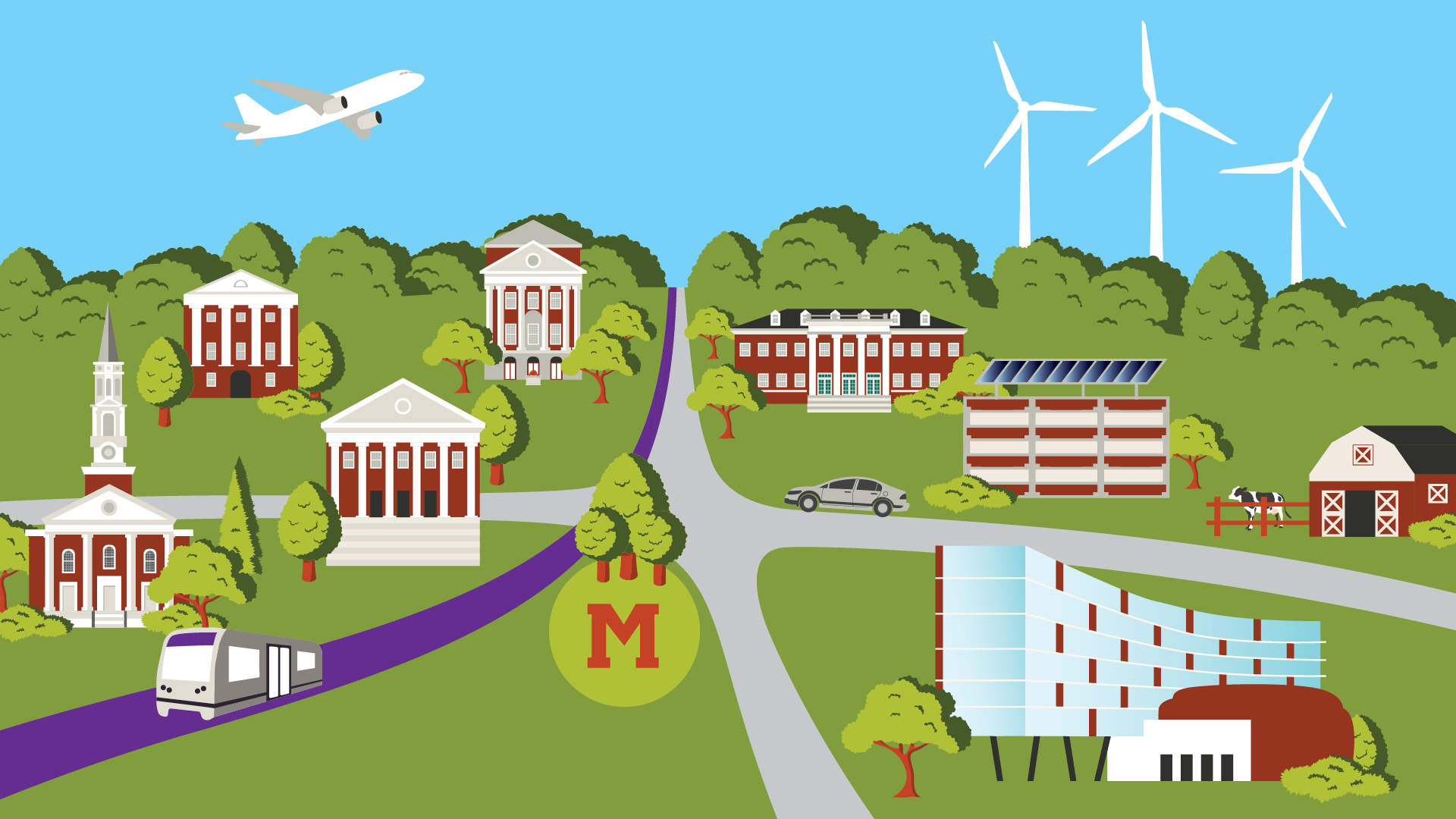- April 22, 2019
- By Office of Sustainability Staff
On Earth Day 2019, the University Maryland is showing how to create a big impact on the world—through its scholarship, research and climate leadership—while continually reducing its output of greenhouse gases.
The university has already achieved a 49% decrease in net carbon emissions, and the campus Climate Action Plan charts our path to carbon neutrality by 2050. It has reduced its solid waste stream as well, diverting millions of water bottles and single-use food service items from landfills, thanks to bottle-filling stations and the recent Anytime Dining program.
Take a look below at what Terps are doing to meet UMD's climate goals.

Topics
Campus & Community